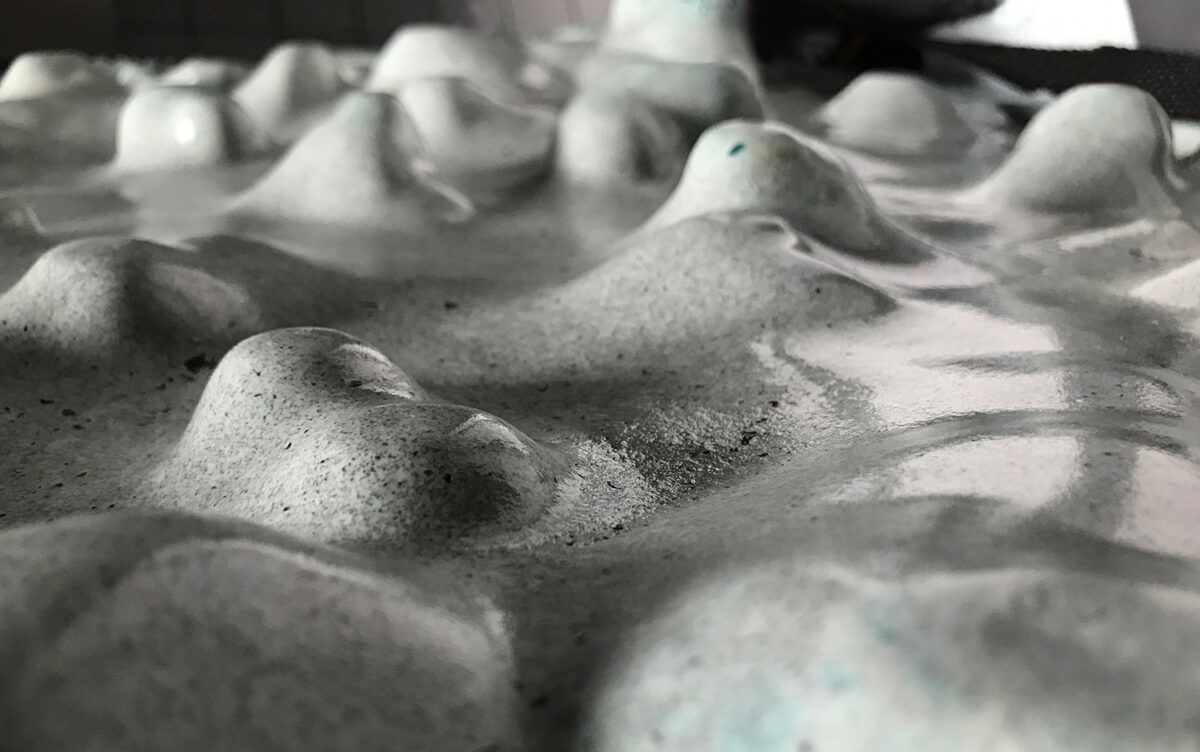Fabricating Complexity in Concrete with #iceformwork

ESR9- SIMULATING CONCRETE FORMWORK
AUTHOR: VASILY SITNIKOV
In order to minimize the amount of cement involved in concrete constructions, the concrete industry today chooses to reduce the share of cement in the total mass of concrete. This approach leads to lower mechanical properties of concrete, resulting in thicker floor slabs and massive beams.
An alternative strategy is to increase the share of cement in the total mass, transferring it to the class of Ultra-High Performance Concrete (UHPC). The main reason to seriously consider ice formwork is that it facilitates not only a wasteless but ultimately a clean fabrication process: an ice formwork will disappear without leaving anything but clean water, once exposed to a source of heat.
In effect, ice formwork eliminates any need for manual labour as well as the geometric constraints associated with traditional formwork systems.
A key question from the design perspective is how to impose a desirable geometry on ice. This video documents a fabrication process of the latest prototype – a concrete slab with an adulating surface. As one can see, this shape is being imposed on ice through thermal influence, that is a jet of warm water projected onto various regions of the ice block. While being a completely waste-free process, this carving technique exploit natural formal complexity – a smooth, doubly-curved shape that naturally occurs in the process of melting deformations. At the current stage, the work does not aspire to control the shape, but rather to explore the natural morphology of ice deformations and their potential for use in architectural design.

